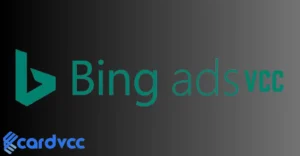To dispute a Discover credit card charge, log into your Discover account and navigate to the “Activity and Statements” section. Select the transaction in question and click “Dispute Charge.”

Disputing a credit card charge with Discover is straightforward. Cardholders can easily initiate the process online. Resolving billing errors, unauthorized charges, or merchant disputes is essential for maintaining accurate credit records. Discover offers a user-friendly platform, making it simple to challenge questionable transactions.
Understanding your rights and the steps involved can save you time and stress. Always monitor your statements regularly to catch any discrepancies promptly. This proactive approach ensures your financial health remains intact. Learn how to dispute charges effectively and keep your account in good standing.
Introduction To Credit Card Disputes
Disputing a credit card charge can seem daunting. But understanding the process makes it easier. Discover has a straightforward method for filing disputes. This guide helps you navigate the steps with ease.
Common Reasons For Disputes
People dispute credit card charges for various reasons. Here are some common ones:
- Unauthorized Charges: Charges you did not approve.
- Billing Errors: Incorrect amounts or duplicate charges.
- Goods Not Received: Items you bought never arrived.
- Faulty Merchandise: Products that are broken or not as described.
- Refund Not Processed: Promised refunds that never appeared on your statement.
Importance Of Timely Action
Acting quickly is crucial when disputing charges. Discover has specific time limits. Missing these can hinder your chances of a successful dispute.
Here are some key points to remember:
- Report Within 60 Days: Notify Discover within 60 days of the statement date.
- Gather Evidence: Collect all necessary documentation like receipts and emails.
- Contact Discover: Reach out to Discover through their website or phone.
Timely action ensures Discover can investigate properly. This increases your chances of a successful resolution.
Gathering Necessary Information
Disputing a credit card charge with Discover requires gathering the necessary information. This step is crucial for a successful dispute. Organized and complete documentation helps your case. Let’s break down the steps to gather the required information.
Reviewing Statements
First, review your credit card statements. Look for the charge in question. Verify the date, amount, and merchant name. Note any discrepancies. Keep a copy of the statement for your records.
Collecting Supporting Documents
Next, collect supporting documents. These might include:
- Receipts
- Invoices
- Emails with the merchant
- Proof of return or cancellation
Having these documents strengthens your case. Organize them in a folder for easy access.
| Document Type | Details |
|---|---|
| Receipt | Shows purchase details |
| Invoice | Lists items and amounts |
| Communication with merchant | |
| Proof of return | Shows item was sent back |
Ensure all documents are clear and readable. If needed, make copies. Proper documentation speeds up the dispute process.
Contacting Discover Customer Service
Disputing a credit card charge with Discover is easier than you think. You need to contact Discover customer service to start the dispute process. Below are the steps to help you.
Phone And Online Options
You can contact Discover customer service by phone or online. Both methods are simple and quick.
- Phone: Call the number on the back of your Discover card. Speak to a representative and explain your issue. They will guide you through the dispute process.
- Online: Log in to your Discover account. Navigate to the “Account Activity” section. Find the charge you want to dispute. Click on it and follow the prompts.
Information To Provide
When you contact Discover, have all the necessary information ready. This will help speed up the process.
| Type of Information | Details |
|---|---|
| Personal Information | Your name, account number, and contact details |
| Transaction Details | Date, amount, and merchant name of the disputed charge |
| Reason for Dispute | Why do you believe the charge is incorrect or unauthorized |
Providing accurate information helps resolve your dispute quickly.
Submitting A Dispute
Disputing a credit card charge with Discover can be simple. You have two main options: online and mail-in. Each method ensures your issue gets attention.
Online Dispute Form
Using the online dispute form is fast and easy. Here’s how to do it:
- Log in to your Discover account.
- Navigate to the Transactions section.
- Select the charge you want to dispute.
- Click on Dispute Charge.
- Fill out the required information.
- Submit your form.
After submission, you get an email confirmation. Discover reviews and update you on the status.
Mail-in Dispute Process
Some prefer the traditional mail-in dispute process. Follow these steps:
- Write a detailed letter explaining the dispute.
- Include your name, account number, and the disputed charge.
- Attach any supporting documents.
- Mail it to Discover’s dispute address.
Ensure the letter is clear and concise. Discover will notify you upon receiving your letter.
Tracking Your Dispute
Disputing a credit card charge can be stressful. Discover makes it easier by allowing you to track your dispute. This helps you stay updated on the progress. Here’s how to do it effectively.
Checking Status Online
To check your dispute status online, log in to your Discover account. Navigate to the Disputes section. Here, you will see a list of your open disputes.
Each dispute will have a status update. Common statuses include Pending, Under Review, and Resolved. Make sure to check this section regularly. This will keep you informed of any changes.
If you have multiple disputes, use the filters to sort them. This can help you find specific disputes faster.
Follow-up Calls
If you need more details, call Discover’s customer service. Use the number on the back of your card. Provide your dispute reference number. This will help the representative find your case quickly.
Prepare a list of questions before your call. This ensures you cover all your concerns. Keep a pen and paper handy to note down important points.
Remember to ask for the representative’s name. This helps if you need to follow up again. Tracking your dispute involves both online checks and calls.
By staying proactive, you can resolve your dispute efficiently.
Resolving The Dispute
Disputing a credit card charge with Discover can feel overwhelming. Knowing how to resolve the dispute is crucial. This guide will help you understand the steps and possible outcomes.
Possible Outcomes
After submitting your dispute, Discover will review it. Here are the possible outcomes:
- Charge Reversal: Discover may reverse the charge.
- Temporary Credit: You might get a temporary credit.
- Denial: Your dispute could be denied.
Discover will notify you of the outcome. They may ask for more information.
Next Steps If Denied
If your dispute is denied, don’t panic. Here are your next steps:
- Review the Reason: Understand why the dispute was denied.
- Gather Evidence: Collect any missing evidence or documents.
- Contact Discover: Call Discover to discuss the denial.
- Submit Again: Consider submitting the dispute again with new evidence.
By following these steps, you can still resolve the issue. Stay persistent and organized.

Are virtual cards good for preventing scams?
Scams are everywhere. They can happen to anyone. They can happen anytime. But there is a solution. Virtual cards can help prevent scams. This blog will explain how.
What Are Virtual Cards?
Virtual cards are digital versions of physical credit or debit cards. They have unique numbers. You use them for online transactions. They protect your main card details.
Why Are Virtual Cards Safer?
Virtual cards add an extra layer of security. Here’s how they do it:
- Unique Numbers: Each virtual card has a unique number. This number is different from your actual card.
- Limited Use: You can set limits on virtual cards. You can use them for a single purchase or a set period.
- Easy to Cancel: You can easily cancel a virtual card. This stops any further unauthorized use.
How Do Virtual Cards Prevent Scams?
Virtual cards prevent scams in many ways:
| Method | Description |
|---|---|
| Hides Real Card Number | Your real card number stays hidden. Scammers cannot get it. |
| Limits Spending | You can limit how much can be spent. This reduces risk. |
| Easy to Manage | Virtual cards are easy to create and cancel. This adds flexibility. |
Why Businesses Should Use Virtual Credit Cards
Businesses face many risks. Scams are a big one. Virtual credit cards can help. Here’s why businesses should use them:
- Improved Security: Virtual cards offer better security for online transactions.
- Cost Control: You can set spending limits. This helps control costs.
- Easy Management: Managing multiple cards is simple. You can create and cancel cards as needed.
How to Get Started with Virtual Cards
Getting started with virtual cards is easy. Follow these steps:
- Choose a provider. One option is Cardvcc.
- Sign up for an account.
- Create your virtual cards. Set spending limits and usage rules.
- Use your virtual cards for online transactions.
Benefits of Using Cardvcc
Cardvcc is a great choice for virtual cards. Here are some benefits:
- Instant Creation: You can create virtual cards instantly.
- Easy Management: Cardvcc makes managing multiple cards simple.
- Enhanced Security: Cardvcc offers top-notch security features.
Virtual cards are an excellent tool. They can help prevent scams. They protect your financial information. Businesses can benefit greatly from using them. Try using a service like Cardvcc today. Stay safe and secure.
Preventing Future Disputes
Disputing credit card charges can be stressful and time-consuming. Taking steps to prevent future disputes can save you from hassle. Here are some effective strategies to help you avoid such issues.
Monitoring Your Accounts
Regularly checking your credit card statements is crucial. This helps you spot unauthorized transactions early. Make it a habit to review your account weekly.
Set up account alerts for real-time transaction notifications. Most banks offer this feature for free. It will help you stay on top of your spending.
Use secure networks when accessing your financial information. Avoid public Wi-Fi to prevent unauthorized access to your accounts.
Best Practices For Credit Card Use
Keep your credit card details private. Do not share your credit card number with anyone.
Use credit cards only on trusted websites. Look for “https” in the URL. This indicates a secure connection.
Always sign up for two-factor authentication. This adds an extra layer of security to your account.
Pay your bills on time. Late payments can result in additional charges and disputes.
If you notice any suspicious activity, report it immediately. Quick action can prevent further unauthorized charges.
Keep track of your spending. Use budgeting tools or apps to manage your expenses effectively.
| Action | Benefit |
|---|---|
| Monitor Accounts Weekly | Catch unauthorized charges early |
| Set Up Account Alerts | Stay informed about transactions |
| Use Secure Networks | Protect your financial information |
| Practice Safe Online Shopping | Reduce the risk of fraud |
| Enable Two-Factor Authentication | Enhance account security |
| Report Suspicious Activity | Prevent further unauthorized charges |
Legal Rights And Protections
Disputing a credit card charge can feel overwhelming. Knowing your legal rights and protections is crucial. These rights help you resolve disputes quickly and fairly.
Fair Credit Billing Act
The Fair Credit Billing Act (FCBA) offers strong protections. It allows you to dispute billing errors. These errors include unauthorized charges and incorrect amounts. The FCBA requires you to act quickly. You must notify your card issuer within 60 days.
Here’s a step-by-step process to follow:
- Write to your credit card issuer.
- Include your name and account number.
- Describe the billing error.
- Send your letter to the designated address.
Your credit card issuer must acknowledge your dispute. They have 30 days to reply. They must resolve the dispute within two billing cycles.
Consumer Protection Agencies
Several Consumer Protection Agencies can assist you. These agencies ensure your rights are upheld. Here are a few key agencies:
| Agency | Contact Information |
|---|---|
| Consumer Financial Protection Bureau (CFPB) | consumerfinance.gov |
| Federal Trade Commission (FTC) | ftc.gov |
| Better Business Bureau (BBB) | bbb.org |
Contact these agencies if you need help. They can provide guidance and support.
Remember, knowing your rights helps you dispute charges effectively. Use the FCBA and consumer agencies to your advantage.

Frequently Asked Questions
How Do I Start A Charge Dispute With Discover?
To start a dispute, log into your Discover account. Navigate to the “Activity & Statements” section. Select the transaction you wish to dispute and follow the prompts. You can also call Discover customer service for assistance.
What Evidence Do I Need For A Dispute?
Gather all relevant documents, such as receipts, emails, and correspondence with the merchant. These will support your dispute case. Clear evidence helps expedite the resolution process and increases your chances of a favorable outcome.
How Long Does A Discover Dispute Take?
A Discover dispute typically takes 30 to 60 days to resolve. The duration may vary depending on the complexity of the case. Discover will keep you updated throughout the process and notify you of the final decision.
Can I Dispute A Charge Online With Discover?
Yes, you can dispute a charge online via the Discover website. Log into your account, find the transaction in question, and follow the dispute prompts. This method is quick and convenient.
Conclusion
Disputing a credit card charge with Discover is straightforward. Follow the steps outlined to resolve any issues. Remember, acting quickly can protect your finances. Always review your statements regularly to catch any discrepancies early. By staying vigilant, you can maintain a healthy credit score and financial peace of mind.
Read More- How to Buy Reloadable VCC







